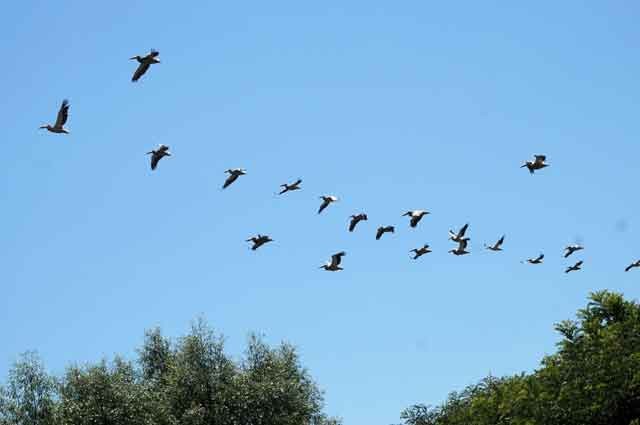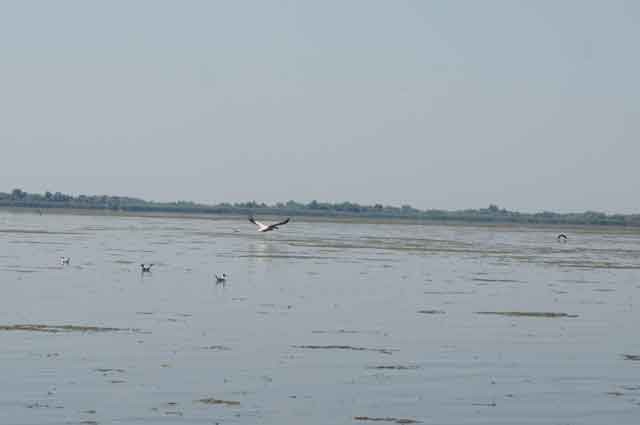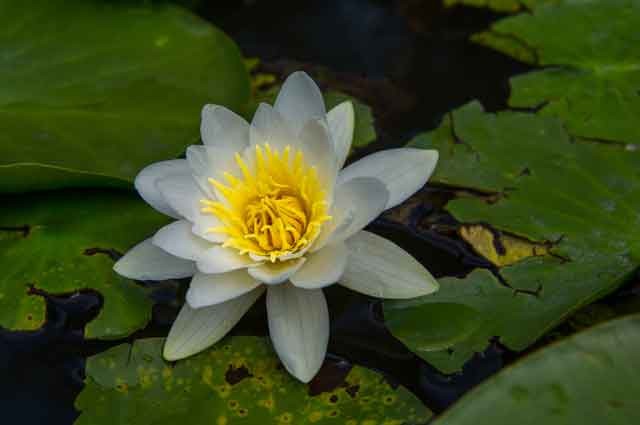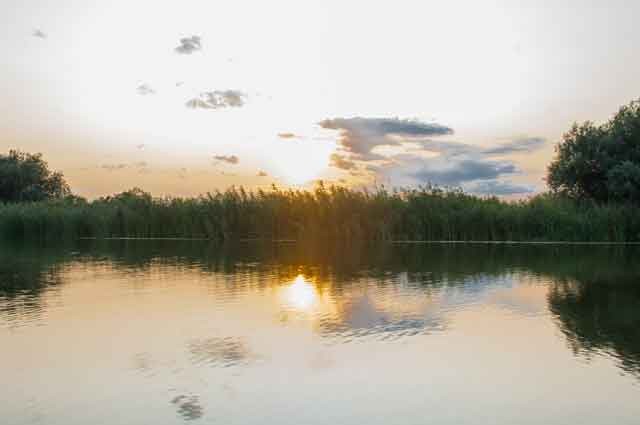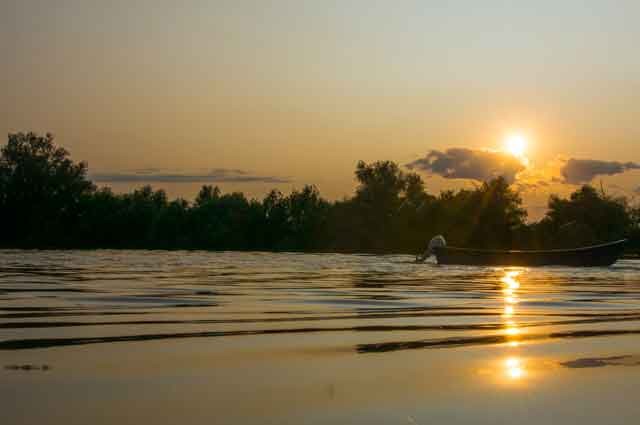Nature and Animals of Romania. Danube Delta.
I will tell you some important things about Romania’s flora and fauna. Nowadays, one-third of Romania's territory is a mountain area, largely forested, where most of the interesting flora and fauna are to be found. Another third of the country territory is hills and plateaux areas, with a fair quantity of woodland still remaining, and another third is a plain area, most intensively farmed.
Highlights
Danube Delta Biosphere Reserve (DDBR)

The Danube Delta is a unique habitat, formed from massive quantities of sediments brought down by the river. It is Europe’s most extensive wetland and the world’s largest continuous reed bed. It is an important breeding area for birds, as well as a unique wintering area and a key stepping-stone on one of the most important migration routes from northern Europe via the eastern Mediterranean to Africa.
At the end of a road, that surpasses 2.860 km, gathering rivers to an outstanding basin, with a surface that covers more than 80% of the European surface, the Danube, the second largest river of the old continent builds at its intersection with the Black Sea, for more than 10.000 years, one of the most beautiful “delta” of Europe and even more, of the entire world, known as one of the most humid areas of the Planet. The stretches of water and lands that were formed here, give great conditions of life for a large number of species of plants and animals. From these, the reed makes one of the largest compact areas of the world, and the woods Latea and Caraorman represent the northern limit for two rare species of our country, oak trees, frequently seen in the southern area of the Balkan and Italian Peninsula. Along with the great number of aquatic and terrestrial plants, we encounter colonies of pelicans and cormorants that are so proper to the Danube Delta, like the large number of other aquatic birds that live or come to hatch or hibernate. Also, we are also to notice the great number of species of fish with an ecological value and also with a higher economy. It can be said that with this remarkable diversity of the habitats and life forms that host into a relatively small area, Danube Delta represents a true museum of biodiversity, a layer of natural genes, which is invaluable for the universal natural heritage.
Flora - 2383 species The DDBR flora is represented by 2 383 taxons, and 70% of the vegetation is dominated by reed (Phragmites australis), sedge(Typha angustifolia), associations of Scirpetum and reed vegetations on floating formations.
On lakes and channels, there are aquatic plants represented by underwater species: water lilly (Nymphea sp., Nuphar), Trapa natans, Potamogeton sp., Myriophyllum sp., Utricularia sp.
On higher shores, there are willow forests (Salix trianda, Salix fragilis and Salix alba), while the smaller Salix cinerea grows on lower shores.
In Letea and Caraorman Forests, developed on lower and humid areas between sand dunes (areas called “hasmace”) grow species of oak (Quercus robur, Quercus pedunculiflora) along with ashtree(Fraxinus angustifolia, Fraxinus pallisiae) and different species of shrub and climbing plants: wild vine (Vitis silvestris) or lianas (Periploca graeca).
The sand dunes typically hold arenaceas associations (Koeleria pyramidata, Koeleria glauca, Festuca pallens etc.).
On areas with salted soils frequently grow halophile plants associations of Salicornia herbacea, Suaeda maritima, Puccicinelia distans, Aeluropus littoralis and Limonium gmelini. A distinct category is represented by rootless plants (floating plants) like Salvinia natans, three species of Lemna, Wolffia arrhiza, Utricularia vulgaris, and Spirodela polyrrhiza.
During the inventory of the species from the DDBR two completely new species were discovered: Centaurea pontica and Elymus pycnattum deltaicus.
Fauna - 4.029 species Due to very favorable conditions created by the big variety of terrestrial and aquatic habitats, as well as the proximity of some palearctic fauna regions (Mediterranean, Eurasian, Black Sea), the fauna from the DDBR is represented by 4.029 species, from which 3 477 invertebrates and 522 vertebrates The invertebrates represent from far the most important part of the DDBR fauna, with more than 3 477 species. There are 73 species of worms, 91 species of mollusks, 115 crustaceans, 168 spiders and 2 244 other species of insects. 37 new species were described, including 1 worm Proleptobchus deltaicus, 5 species of spiders, 1 fish Knipowitschia cameliae and 30 species of insects (Isophya dobrogensis, Diaulinopsis deltaicus, Homoporus deltaicus etc)
The fish fauna from the DDBR is remarkably rich, with 135 species. The majority is fresh water fishes, but there are also marine species that come into the Danube Delta and on the Danube course during the reproduction season.
Approximately a third of these species were and still are subject to commercial fishing, including the sturgeons (since 2006 there is a 10 year prohibition) and the Danube mackerel (Alosa pontica).
The amphibians and the reptiles are also well represented in the DDBR, most of the species being under legal protection. There are 10 species of amphibians: marsh frog (Rana ridibunda), fire-bellied toad (Bombina bombina), European tree frog (Hyla arborea), common spadefoot (Pelobates fuscus), common toad (Bufo bufo), European green toad (Bufo viridis), Syrian spadefoot (Pelobates syriacus balcanicus), Rana lessone and two species of water lizard, Danube crested newt (Triturus dobrogicus, Triturus vulgaris). The reptiles are represented by 12 species including testaceous, lezards (Sauria) and snakes (Serpentes).
The Danube Delta Biosphere Reserve remains famous for its birds, with a total of 331 species (apart from the 520 species inventoried in Western Europe). The area is worldwide recognized as a nesting place for many bird populations like the white pelican (Pelecanus onocrotalus), the Dalmatian pelican (Pelecanus crispus) and the pygmy cormorant (Phalacrocorax pygmeus). There are also important colonies of spoonbill (Platalea leucorodia) and several nesting species of white-tailed eagle (Haliaeetus albicilla). The Danube Delta area is a major halting place (during spring and autumn) for millions of birds, especially ducks, white storks (Ciconia ciconia) and numerous predators. During winter, the Danube Delta hosts huge groups of swans and geese, including almost the entire world population of red-breasted goose (Branta ruficollis)
The Bern Convention protects an important number of birds (313 out of the 331 species), mammals (22 protected species and 7 strictly protected species) and fish (22 protected species). In the springtime, the mountain meadows of Romania are a riot of wildflowers, 12 % percent of which are endemic to the Carpathians. From April to July you can find spectacular scenes of clover, hawkweed, burdock, fritillary, and ox-eye daisy covered in butterflies and on higher levels you can see gentians, white false hellebore, bulb flowers, and crocus. Alpine plants also include campanulas, saxifrage, orchids, alpine buttercup, pinks and in a few places eidelweiss.
The Danube Delta in the springtime, especially in May, is excellent to visit as you can see rare species like black-winged pranticole, pygmy cormorant, glossy ibis, white and Dalmatian pelicans, and warblers all arriving. In total there are more than 70.000 birds. Away from the Delta, in the mountains, you can find golden eagles, ravens. Woodpeckers, common black redstart, water pipits, and alpine swifts, crag martins and rock buntings, hazel grouse, and black grouse. The forests are also a home for birds of prey like buzzards, honey buzzards, sparrow hawks, and goshawks as well as a number of owl species.
